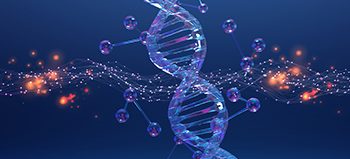What are Single Use Bioreactors?
Single use bioreactors are bioreactors (biological reactors) designed for a single-use application. These bioreactors are generally disposable and are typically made of plastic or stainless steel. They are used to facilitate the growth of cells or microorganisms in a controlled environment and can be used to produce a variety of products, including pharmaceuticals, chemicals, and food. Single use bioreactors offer a number of advantages over traditional bioreactors, including reduced costs, reduced risk of contamination, and greater flexibility in terms of scale and process development.
Benefits of Single Use Bioreactors
1. Reduced Risk of Contamination: Single-use bioreactors provide a more sterile environment than traditional stainless steel bioreactors, reducing the risk of contamination and simplifying the cleaning and sterilization process.
2. Lower Cost: Single-use bioreactors are less expensive than stainless steel bioreactors, since they require fewer components and less labor and material costs for setup and operation.
3. Increased Flexibility: Single-use bioreactors can be easily reconfigured and scaled up or down to meet changing production needs and requirements.
4. Improved Process Control: Single-use bioreactors provide better process control, allowing for more accurate measurements and better process reproducibility.
5. Greater Product Quality: Single-use bioreactors ensure consistent product quality, since there is less risk of cross contamination.
Types of Single Use Bioreactors
1. Stirred Tank Bioreactors: These bioreactors are the most common and widely used type of single use bioreactor. They work by combining a mechanical stirrer with a single-use vessel to mix the contents of the bioreactor. They are available in a variety of sizes and are often used for cell culture and microbial fermentation.
2. Bubble Column Bioreactors: These bioreactors use gas bubbles to mix the contents of the bioreactor. This makes them suitable for applications involving foams, such as those used in vaccine production.
3. Wave Bioreactors: These bioreactors use acoustic waves to mix the contents of the bioreactor. This makes them particularly suitable for cell culture and fermentation processes, as they can provide gentle agitation of the cells without causing shear forces that can damage the cells.
4. Perfusion Bioreactors: These bioreactors use a continuous flow of culture medium to keep the cells supplied with nutrients and remove waste products. They are particularly suitable for cell culture applications.
5. Microfluidic Bioreactors: These bioreactors use a network of tiny channels to mix the contents of the bioreactor. This makes them particularly suitable for small-scale applications, such as cell culture and cell line development.
Current Trends in the Single Use Bioreactors Industry
1. Automation: Automation is becoming increasingly important in the single-use bioreactors industry. Automation can be used to reduce labor costs, streamline processes and reduce waste. Automation can also improve the accuracy and consistency of the bioreactor process, allowing for more consistent and reliable end products.
2. Advanced Technologies: Advanced technologies such as optical sensors and predictive analytics are being developed to monitor and track the performance of single-use bioreactors. This technology can help ensure that the bioreactor is operating at peak efficiency, and can also help identify areas for improvement.
3. Regulatory Compliance: Regulations around single-use bioreactors are becoming increasingly stringent, as governments and regulatory bodies strive to ensure safety and efficiency. Companies must ensure that their bioreactor systems and processes are compliant with all applicable regulations.
4. Cost Efficiency: Cost efficiency is becoming increasingly important in the single-use bioreactors industry. Companies are looking to reduce costs while still maintaining high quality products. Companies are turning to advanced technologies and automation to help reduce costs while still delivering high quality end products.
5. Process Flexibility: Process flexibility is becoming increasingly important in the single-use bioreactors industry. Companies are looking for bioreactors that are capable of handling a variety of processes, such as cell culture, fermentation, and protein purification. This process flexibility allows companies to quickly adapt to changing customer demands.
The Future of the Single Use Bioreactors Industry
The single use bioreactors (SUBs) industry is expected to grow significantly in the coming years. This growth is largely driven by the adoption of single use technology in biomanufacturing as well as the increased demand for bioprocessing applications. The increasing demand for SUBs is driven by the need to reduce costs and improve productivity, while ensuring the highest quality standards. The global Single use Bioreactors Market boasts a total value of $3.4 billion in 2021 and is projected to register a growth rate of 21.1% to reach a value of $8.8 billion by 2026
The adoption of SUBs is expected to increase over the next few years due to factors such as their cost-effectiveness, scalability, and sustainability. Additionally, the growing demand for personalized and targeted medical treatments is expected to drive the market for single use bioreactors. Furthermore, the development of new SUBs with improved design, performance, and safety features is projected to support the growth of the industry. Innovation in the SUBs industry is expected to continue to drive the industry forward, with new designs and materials improving the performance of SUBs
Related News
https://www.prnewswire.com/news-releases/single-use-bioreactors-market-worth-8-8-billion-by-2026–exclusive-report-by-marketsandmarkets-301358766.html
https://www.marketsandmarkets.com/PressReleases/single-use-bioreactor.asp

